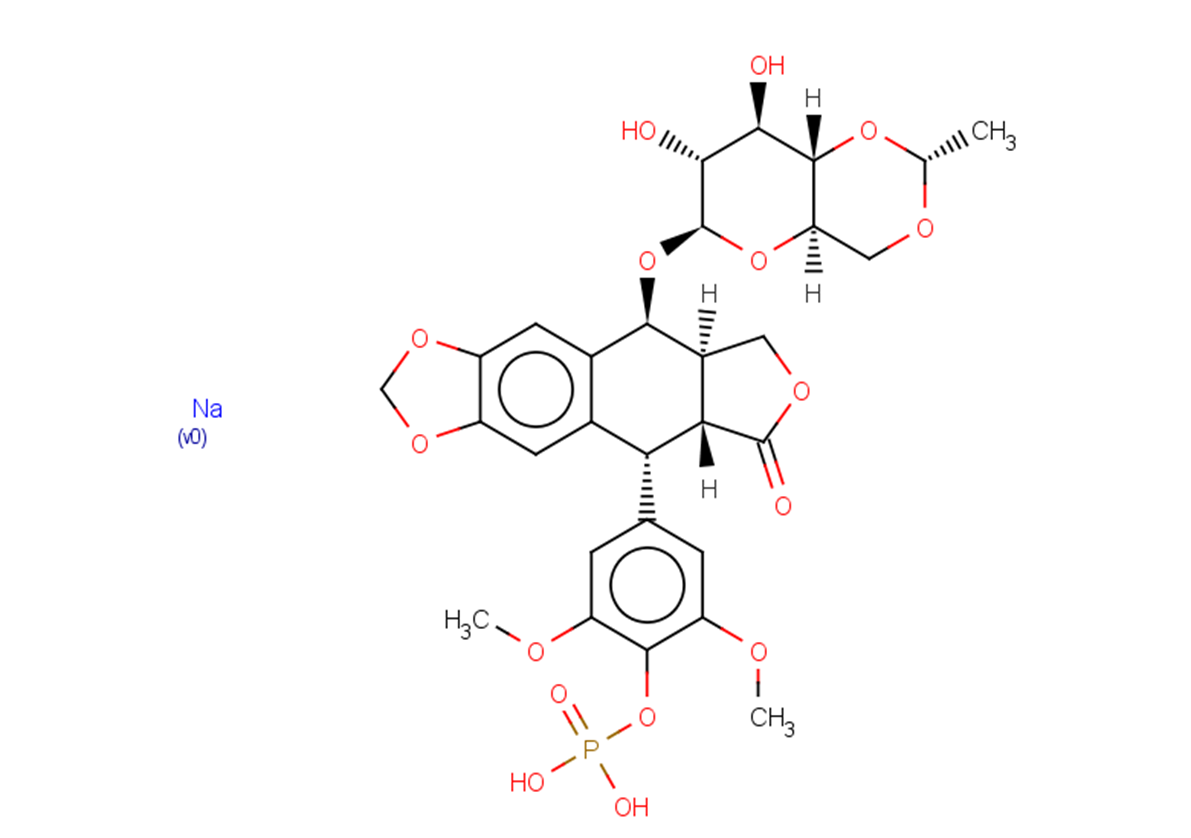Powder: -20°C for 3 years | In solvent: -80°C for 1 year


Etoposide phosphate disodium (BMY-40481 disodium), a phosphate ester prodrug of etoposide, functions as a potent chemotherapeutic agent by selectively inhibiting topoisomerase II, hindering the re-ligation of DNA strands. It is regarded as the active equivalent of etoposide, effectively inducing cell cycle arrest, apoptosis, and autophagy in cancer cells.

| Pack Size | Availability | Price/USD | Quantity |
|---|---|---|---|
| 5 mg | Inquiry | $ 970.00 |
| Description | Etoposide phosphate disodium (BMY-40481 disodium), a phosphate ester prodrug of etoposide, functions as a potent chemotherapeutic agent by selectively inhibiting topoisomerase II, hindering the re-ligation of DNA strands. It is regarded as the active equivalent of etoposide, effectively inducing cell cycle arrest, apoptosis, and autophagy in cancer cells. |
| In vitro | Etoposide phosphate disodium, a water-soluble derivative and likely prodrug of etoposide, is distinguished by a phosphate group at position 4' on the E ring of the etoposide molecule[1]. It demonstrates dose-dependent inhibition of HCT116 FBXW7 +/+, FBXW7 -/-, and p53 -/- cells, with IC50 values being 0.945 μM, 0.375 μM, and 1.437 μM respectively, when administered at concentrations ranging from 0-1 μM over 72 hours[2]. At a concentration of 25 μM for 6 hours, etoposide phosphate disodium delays the recovery of p53 in cells deficient in FBXW7, where FBXW7 expression is absent in FBXW7 -/- cells[2]. Cell viability assays show that the compound inhibits the growth of HCT116 FBXW7 +/+, FBXW7 -/-, and p53 -/- cells in a concentration-dependent manner at varying concentrations up to 1 μM over 72 hours[2]. Additionally, Western Blot analysis reveals that at 25 μM concentration for 6 hours, there is a delayed recovery of p53 levels in HCT116 FBXW7 +/+ or FBXW7 -/- cells post DNA damage, mediated by FBXW7 presence[2]. |
| In vivo | Etoposide phosphate, administered as a single intravenous injection at dosages of 50, 100, or 150 mg/kg, induces prominent clinical symptoms in female CD-1 mice, including progressive ataxia, an impaired righting reflex, and splaying coupled with paresis of both fore- and hindlimbs by day 8. Similarly observed under light microscopy (LM) were degenerative changes in dorsal root ganglion cells and axonal degeneration in their distal and proximal processes affecting peripheral nerves, dorsal spinal roots, and dorsal funiculi of the spinal cord across all tested doses. |
| Synonyms | BMY-40481 disodium, Etoposide phosphate disodium |
| Molecular Weight | 691.531 |
| Formula | C29H33NaO16P |
| CAS No. | 122405-33-8 |
Powder: -20°C for 3 years | In solvent: -80°C for 1 year
You can also refer to dose conversion for different animals. More
bottom
Please see Inhibitor Handling Instructions for more frequently ask questions. Topics include: how to prepare stock solutions, how to store products, and cautions on cell-based assays & animal experiments, etc.
Etoposide phosphate disodium 122405-33-8 BMY-40481 BMY-40481 disodium Etoposide Phosphate BMY 40481 BMY40481 inhibitor inhibit
